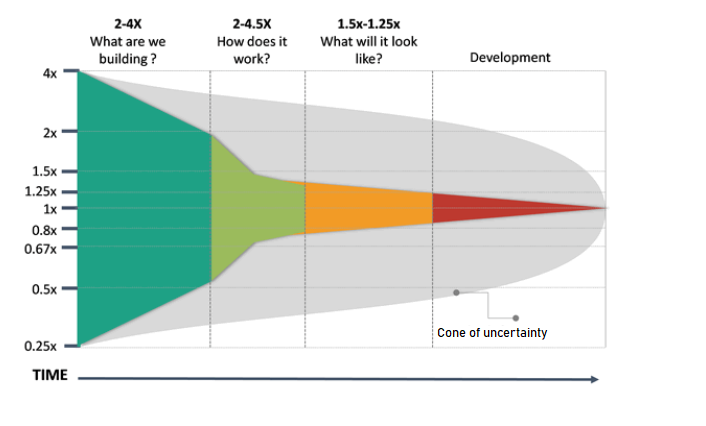Red Hat OpenShift has gained a lot of popularity among the modern-day container platform solutions. This is mainly because of its added-value features on top of Kubernetes, which significantly improve user experience as well as security. Although these platforms are very popular as persistent environments (dev/test/acc/production) to develop and launch applications on, they are rarely seen as temporary environments to try out new functionalities. Why is that? And could this view be changed?
Deploying an entire OpenShift Cluster brings a lot of hassle and takes a lot of time, especially on-prem or in the private cloud. For example, think about the underlying infrastructure and licensing that needs to be in place. Luckily, Azure came up with a turn-key solution: Azure Red Hat OpenShift (ARO). An ARO cluster can be spinned up (or taken down) in Azure Cloud using any Azure Subscription, either by the click of a few buttons in the Azure Portal or a simple command in the Azure cli. This opened up the door to another angle: using ARO-clusters as temporary environments during Proof of Concepts (POCs). This has proven to be a very useful approach within organizations where POCs are frequently slowed down by security or regulatory measures (think large financial institutions such as Banks, or Government instances).
Migrating applications to an OpenShift platform
Let’s say a DevOps team at CashMoneyBank is responsible for migrating applications from their on-prem VM’s to an OpenShift platform. The developer teams rightfully point out that a modern containerized platform should come with a modern environment for the apps to be developed in. Answering to this need, the DevOps team starts a POC to look into Red Hat DevSpaces, a fairly new technology implemented within OpenShift that provides a personalized Workspace for developers inside the cluster, accessible through a browser IDE.
The team could start experimenting with this feature in a dev-cluster they already have inside the Bank, but in that case they would have to convince other teams that this new functionality will not lead to any issues on topics such as security, resources and so on. In other words, they would have to put a significant amount of effort into this POC before they can even start, still not knowing whether this new functionality will be of any use to the developer teams. On the other hand, they could also spin up a fresh ARO cluster, try out the functionalities of DevSpaces together with the developer teams and decide if this would be of any use to them or if they should move on to a different solution. Much quicker and convenient.
Spinning up an ARO cluster using the Azure CLI
Prerequisites for spinning up an ARO cluster are that a resource group is available with a Virtual Network (VNET) and two empty Subnets (one for the master nodes, one for the worker nodes). Next, the ARO cluster can be initialized by performing the following command. It will be ready for use in approximately 35 minutes.
az aro create \
–resource-group <RG-name> \
–name <aro-cluster-name> \
–vnet <vnet-name> \
–master-subnet <master-subnet> \
–worker-subnet <worker-subnet>
Next, credentials to the cluster login can be obtained by
az aro list-credentials \
–name <aro-cluster-name> \
–resource-group <RG-name>
After the POC is finished, the ARO cluster can be destroyed just as easily by performing
az aro delete –resource-group <RG-name> –name <aro-cluster-name>
The advantages
Following this process creates an environment that can be operated completely independent of existing environments. This comes with multiple advantages. First of all, every action performed falls within the circle of control of the DevOps team. This means that they are not dependent on any other parties for approval and will have full admin privileges over the cluster that they deploy. In this way, new features can be experimented with in environments with no limitations, so that their full potential is revealed. This would not be the case if their platform within the bank is managed by another team or even by another company on the private cloud.
On a second note, they save a lot of time with this approach, also because the POC environment can be brought to its desired state much faster. In short, this way of working helps with “narrowing” the cone of uncertainty in a much shorter time frame, shortening decision making time and getting rid of uncertainty by keeping all operations within grasp. Therefore, value is delivered to the business more quickly.

Premium Microsoft Consulting with Devoteam
Devoteam M Cloud, an Expert Azure MSP Partner, is one of the world’s leading providers of Microsoft Cloud technologies. Our team of over 1,000 Microsoft experts in EMEA, helps modernize the IT architecture of leading businesses and governmental organizations. With this, we support our clients in their digital journey to the Cloud, make them future-proof, and provide the best managed services. Looking for advice on what container environment to utilize in a specific situation? Devoteam stands ready to support you in determining the best solution for your applications.
